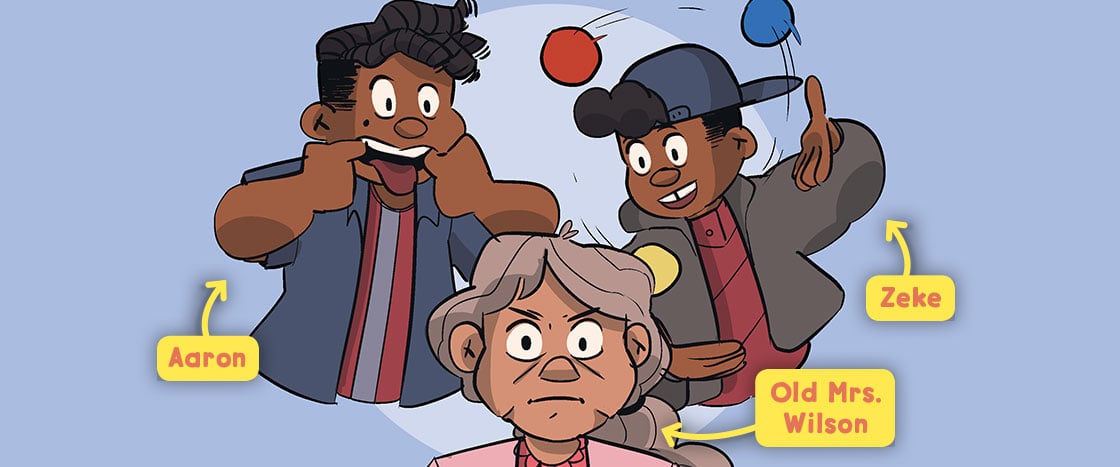THINK AND WRITE
Go to our skills sheet to write what happens next in the story.

About the Story
ELA Focus
Features of graphic novels
LESSON PLAN
Essential Question
The big question of this issue of Storyworks 2 is: What makes something funny?
1. BEFORE READING
Choose a Video (We have two!) (10 minutes)
1. “The Big Question: What Makes Something Funny?” (This video also goes with other stories in this month’s Storyworks 2.)
2. “What’s in a Comic?”
Set a Purpose for Reading (5 minutes)
2. READ THE STORY (10-15 MINUTES)
3. AFTER READING
Extend the Story With an Activity (20 minutes)
Assessment: Quiz (10 minutes)
ELA Focus: Comic Features Hunt (10 minutes)
Enrich the Learning: Paired Text Opportunities (time amount varies)
Making text-to-text connections builds knowledge and comprehension. We layer Storyworks 2 with many ways for your students to make connections.
Pairable Texts “What is Dav Pilkey’s Superpower?” (pages 6-11), “What’s in a Joke?/ How to Tell a Joke” (pages 18-21), and “My Teacher Calls Me Sweetie Cakes” (page 32)
Parts of Speech: A Silly Day at School (15 minutes)
The Silly Day at School printable is a Mad Libs-style fill-in-the-blank activity. Kids can practice being funny and learn parts of speech!
NEW! Special Lesson for Independent Learning While Remote (30-40 minutes)